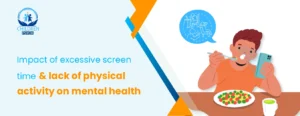Introduction:
As the world continues to grapple with the effects of the COVID-19 pandemic, one crucial aspect that demands our attention is the mental health of children. Over the past two years, the pandemic has brought unprecedented challenges for children and adolescents, disrupting their routines, limiting social interactions, and exacerbating feelings of anxiety and isolation. In this blog post, we will provide an update on the state of child mental health in the first quarter of 2023, shedding light on recent findings, emerging concerns, and the measures being taken to support their well-being.
- Persistent Psychological Effects:
The prolonged impact of the pandemic on children’s mental health has been a cause for concern. Research studies conducted during the first quarter of 2023 suggest that many children continue to experience psychological distress, including symptoms of anxiety, depression, and post-traumatic stress disorder. The disruption of regular school routines, limited socialization, and increased screen time have contributed to these challenges.
2. Educational Challenges and Learning Loss:
The closure and intermittent reopening of schools have posed significant challenges to children’s education and overall development. Many children have fallen behind academically, leading to concerns about long-term learning loss. The lack of in-person instruction reduced access to extracurricular activities, and the shift to remote learning have also impacted children’s social skills and emotional well-being.
- Increased Demand for Mental Health Services:
Recognizing the growing mental health needs of children, there has been an increased focus on expanding mental health services. Governments, educational institutions, and healthcare providers have made efforts to improve access to mental health resources, including counseling, therapy, and telehealth services. However, despite these initiatives, there is still a significant demand-supply gap, leaving many children without the support they need.
- Emphasizing Resilience and Coping Mechanisms:
To mitigate the negative effects of the pandemic on children’s mental health, there has been a renewed emphasis on building resilience and promoting coping mechanisms. Schools and communities have implemented programs that focus on emotional well-being, stress management, and social-emotional learning. Encouraging open communication, providing safe spaces for expression, and nurturing strong support networks are essential in helping children develop resilience.
- Collaborative Efforts and Policy Changes:
Recognizing the urgency of addressing children’s mental health, policymakers, and stakeholders have collaborated to implement policy changes. Efforts are being made to integrate mental health education into school curricula, increase funding for mental health services, and establish comprehensive support systems for children and families. These changes aim to provide a holistic approach to mental health care and ensure long-term support for children affected by the pandemic.
Conclusion:
The first quarter of 2023 has highlighted the enduring impact of the COVID-19 pandemic on the mental health of children. While there are concerning trends, such as persistent psychological effects and educational challenges, there is also growing awareness and collaborative action to address these issues. The prioritization of mental health services, resilience-building initiatives, and policy changes are crucial steps toward supporting children’s well-being in the face of ongoing challenges. By investing in their mental health today, we can provide a brighter and more hopeful future for the younger generation.




